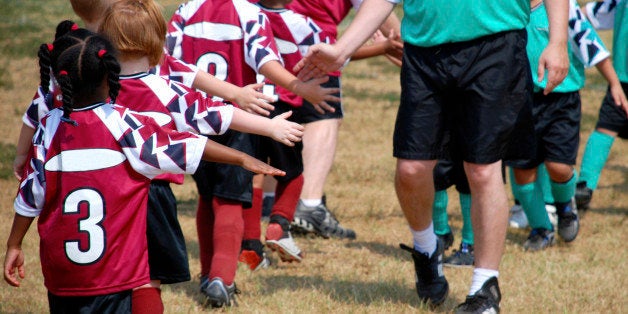
Children should not have low back pain. Yet, many of our young athletes complain to their coaches, teammates and parents that they do, in fact, suffer such symptoms. Regretfully, they are often not taken seriously, or are told "it will go away." Some cases are simple strains and sprains, and others are not so simple, but they can all be managed if diagnosed in a timely manner.
When we reach our 30s, 40s, and 50s, we have many causes of low back pain. Our discs, which are shock absorbers between the vertebrae, can begin to wear down, suffer protrusions or herniations, and may ultimately tear. The facet joints in the spine can become overstretched, excessively compressed, or arthritic and generate pain. Muscles and ligaments can also generate pain.
While young people typically don't have these problems yet, active or athletic children can definitely stress their underdeveloped spines. The repetition and strain of sports such as gymnastics, football, volleyball and weight training (poor technique, too much volume, too much weight too often without recovery) can weaken the pedicle or pars interarticularis (commonly referred to as the pars), which serves as a bridge between the large, blocky part of the vertebra and the part of the vertebra containing the facet joints and bony prominences for tendon and muscle attachment.
When the pedicle is loaded too much, the bone can weaken to the point that it begins to crack, and if the young person keeps pushing, the crack turns into a complete fracture, known as a pars fracture. Low back pain may occur during the weakening process, cracking (stress fracture) or complete fracture.
This type of fracture falls under the category of a spondylolysis, which is a fracture of the pedicle.
If the stress fracture is all the way through the pedicle, it may be visible on an X-ray, but an MRI should be considered when X-rays fail to offer any reasons for low back pain. The reason is that a fracture may not be visible on X-ray until it starts to heal and more bone forms around it. An MRI can reveal edema (bone stress response) before the pedicle fractures, or it can reveal edema in a fracture that the X-ray did not detect.
A stressed pedicle or pars fracture is typically managed with rest and time away from sports and activities. Some cases are prescribed a lumbar or torso brace to keep the lumbar spine from moving too much so it can heal. A very small percentage of these cases require surgery. It typically takes months for the stressed bone to return to a normal state, but this process varies by individual and should be confirmed on an MRI.
Many cases of pars fractures do not heal. Young athletes who never receive health care for a pars fracture may learn later, when they are in their late 20s, that they have this kind of injury. And by this point, we no longer refer to it as a pars fracture, but rather as a spondylolysis, which is simply a pedicle fracture that never healed. Spondylolyses may cause sufferers additional problems.
The bottom line is that these problems are avoidable if pars fractures are addressed when patients are younger. Parents should not dismiss their children's complaints of low back pain, and the same advice applies to coaches, athletic trainers and school nurses: if an athletic child complains of nagging low back pain, you should have him/her examined by a doctor who specializes in sports medicine, spinal injuries or pediatric orthopedics. Children should not have low back pain, and a lifetime of suffering could be avoided with timely and appropriate care.